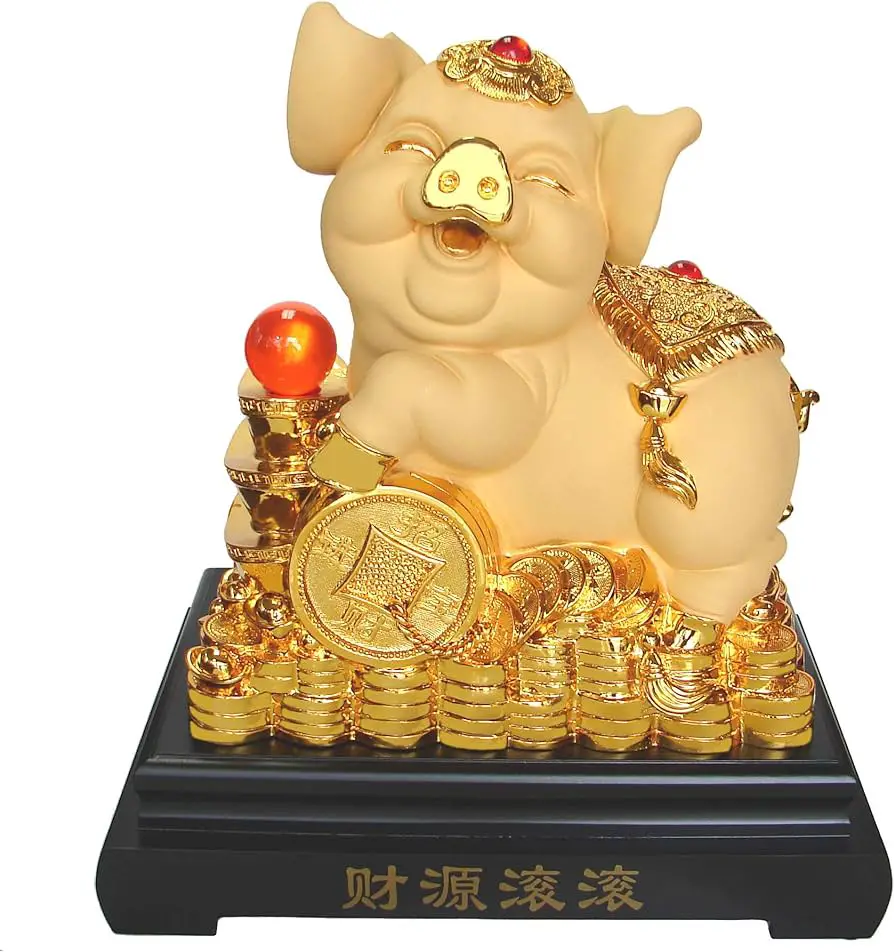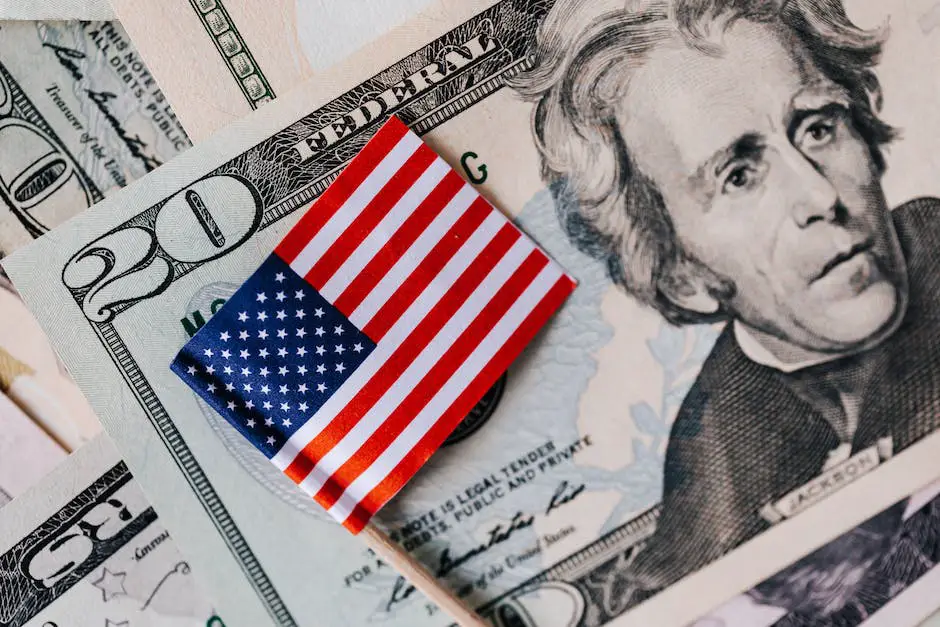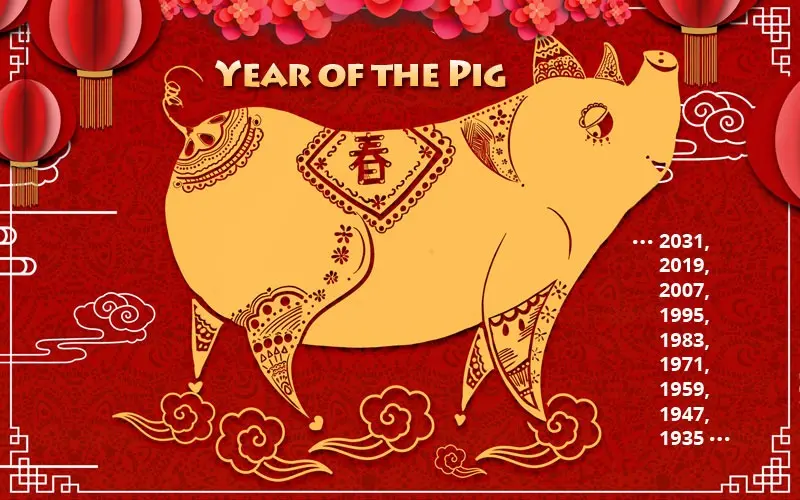The concept of symbolism transcends beyond the understanding of everyday objects, diving into deeper meanings that reflect on cultural perceptions and beliefs. One such prevalent symbol in various cultures are “Golden Pigs”, figures that resonate with meanings of prosperity, wealth, and fertility. The journey of this symbol expands from ancient civilizations to the contemporary, deeply ingrained in social practices, portrayed in art and media, and serving metaphoric renditions in literature.
Origins and History of Golden Pig Symbolism
Golden Pig Symbolism: An impression from Asian Cultures
Considered a symbol of wealth and prosperity in many Asian cultures, pigs, specifically golden pigs, hold a valuable place in various socio-cultural and religious practices. In Chinese culture, the pig is one of the twelve animals of the Chinese zodiac. With a cyclical lunar calendar, the Year of the Pig comes around every twelve years, and its significance is often amplified when the pig is depicted in gold, symbolizing wealth, abundance, and good fortune.
In Korean culture, golden pigs are traditionally gifted as a symbol of prosperity. The golden pig figurines are often seen as New Year’s gifts or presented at weddings to wish couples a wealthy and prosperous life.

Golden Pigs in European Folklore
Several European cultures, pigs, including golden pigs, are seen as symbols of good luck. In German tradition, pigs are often included on New Year’s cards and are considered symbols of good luck for the upcoming year. In Ireland, the saying “he found a pig” is synonymous with someone experiencing good luck, a nod to the pig’s status as a symbol of wealth and abundance.
Symbolism of Golden Pigs in Ancient Times
In antiquity, golden pigs also held prominent symbolic value. The use of pigs in ancient religious ceremonies and gatherings was prevalent mainly because they were a common livestock animal. Their importance was often heightened when depicted in gold. For instance, in the Celtic culture, pigs were associated with fertility and abundance due to their large litters and bountiful nature.
In ancient Rome, a “pig” of lead (a large mass of lead smelted into the ancients’ idea of the shape of a pig) was a standard unit of measure for lead. When such a pig was made of gold, it symbolized extraordinary wealth, far beyond the reach of an average person.
The Golden Pig in Contemporary Context
In today’s world, the golden pig carries strong connotations of prosperity, abundance, and luck. Frequently, these symbolic representations are leveraged in business and promotional efforts, as they appeal to aspirations of wealth and success. Around the Lunar New Year, golden pig trinkets, such as figurines and pendants, become sought-after items, thought to bring good fortune for the coming year.
Golden Pig Symbolism in Asian Cultures
Golden Pig: A Symbol of Opulence in Chinese Tradition
In Chinese traditions and customs, the golden pig has significant stature as an emblem of wealth and prosperity. This symbolic association traces its roots back to the agrarian society where pigs were inherent contributors to the economy – their ease of breeding and rich meat production made them prized possessions. As such, a pig, particularly a golden one, was reckoned as a symbol of considerable affluence.
This meaningful representation permeates various facets of Chinese tradition, including the Chinese zodiac. In this 12-year cycle, each year corresponds to a specific animal, with the pig being one of them. Those born in the Year of the Pig are thought to mirror the positive characteristics of the pig, including honesty, hard work, and generosity. In particular, individuals born under this sign are deemed destined for a life of wealth.
In addition to this, the golden pig has a prominent role in Chinese New Year festivities. According to traditions, charms fashioned in the likeness of a golden pig, whether made from gold or simply colored gold, are common gifts, signifying wishes for the recipient’s financial prosperity in the upcoming year.
Golden Pig Symbolism in Korean Culture
In South Korea, the golden pig also holds a significant place in their cultural and historical narratives. The golden pig is often associated with luck, prosperity, and fertility.
The tradition of using a golden piggy bank, known as ‘금돼지 저금통’ (geum dwaeji jeogeumtong) in Korean, to accumulate wealth is quite popular. Parents often gift these piggy banks to their children and encourage them to save money, instilling the values of financial discipline from a young age. The golden pig, in this context, becomes a symbol of the aspiration for wealth accumulation and financial stability.
Moreover, golden pig charms and figurines are commonly seen and used in Korean businesses. These charms are believed to attract wealth and prosperity, therefore many business owners place them in their shops hoping for thriving businesses.
The golden pig is also linked with fertility in Korean culture. The term ‘돼지해’ (dwaejihæ) or ‘Pig Year’ is often used when referring to a baby boom period in Korea, symbolizing prosperity through abundant birth rates.
Golden Pigs: Symbols of Wealth and Fertility Across Cultures
From the far East to the bustling West, golden pigs have captured the universal yearning for prosperity, abundance, and wealth in numerous cultures. Such societies, despite their differences, have consistently employed the image of the golden pig to represent good fortune, both as a testament to present wealth and as a prediction of future prosperity.
Further strengthening the symbolic resonance, golden pigs are linked with fertility. This concept serves to heighten their associations with abundance and plentifulness. Considering these cultures’ agrarian roots, fertility doesn’t merely designate human procreation but also bountiful harvests, thus fortifying its ties to wealth and prosperity.
To sum up, the golden pig has proved to be a potent emblem encapsulating diverse facets of human aspirations, hopes, and values, specifically within the context of the Chinese and Korean cultures.

Symbolism of Golden Pigs in Western Cultures
The Golden Pig’s Portrayals in Western Cultures
The connotations of golden pigs in Western cultures are profound and varied. They are frequently perceived as symbols of affluence, prosperity, and wealth, embodying the auspicious fortune that life might bestow on the possessors of such a symbol, in literature, art, and folklore.
The golden pig held a sacred and magical position in Anglo-Saxon and Celtic mythologies. For instance, the Celts endowed the golden pig with the representation of the sun and its life-giving force, likely due to their close ties with the natural world and farming.
In Homer’s “Odyssey,” one of Western culture’s earliest text references to pigs arises. Though the pigs in this classic were not golden, the storyline indicated the capacity of pigs to symbolize wealth, transformation, and fortune.
Western literature often portrays the golden pig as a metaphor for greed and overindulgence. H.G. Wells’ story, “The Apple,” exemplifies this, where it serves as a divine retribution tool for gluttony and greed.
Christian symbolism also acknowledges the golden pig significantly. The Gospel of Matthew in the Bible cautions against casting pearls before swine, signifying sharing sacred elements with those who won’t value them. This Biblical passage expands the symbolism of the golden pig, tying it to spiritual richness apart from material wealth.
Recent Portrayals in Western Culture
Within recent years, the golden pig has ascended as a symbol of prosperity and abundance during the New Year, mostly deriving from the German and Austrian tradition of the Glücksschwein or the lucky pig.
Current Western art features the golden pig in various interpretations, exhibiting modern cultural attitudes’ diversity and complexity. Artists often employ the golden pig symbol to delve into themes of consumerism, wealth disparity, and prosperity’s sometimes challenging aspects in the contemporary world.
Golden pig symbolism pervades Western cultural practices significantly. Items featuring golden pigs are acquired as tokens of luck and prosperity, specifically during holidays and the New Year.
In conclusion, Western culture’s golden pig symbolism is intricate and multifaceted, sharing associations with Ancient Greek epics, Celtic and Christian literature of the medieval age, folk traditions, and contemporary art. The golden pig surpasses its basic form to encapsulate deeply symbolic themes related to wealth, greed, spiritual value, and the paradoxical implications of prosperity.
Impacts and Influence on Contemporary Society
The Golden Pig in Contemporary Consumerism
Largely acclaimed as a symbol of prosperity, good fortune, and wealth, the golden pig is widely used in consumerism worldwide, especially during festive seasons and shopping events. Retailers often use its image as a promotional emblem in the hope of attracting customers with the promise of wealth and abundance that the golden pig suggests. An array of products including clothing, jewelry, home decor, and gadgets use this symbolism and creates a psychological link to abundance, prosperity, and good fortune for every potential buyer.
Golden Pigs in Film
In the cinema industry, the golden pig also possesses a significant symbolism and has, therefore, made its way into numerous films, particularly those of Asian origin. Even Western movies have tapped into this symbol. For example, the Australian film “Babe,” while not explicitly using a golden pig, has overtones of prosperity and luck associated with Babe, the pig protagonist who prevents himself from becoming a meal through his industriousness and wit, indirectly linking to the idea of golden pig symbolism.
Golden Pigs in the Art World
In the art world, the golden pig has found its place as a profound symbol of wealth and prosperity. Contemporary artists often incorporate golden pigs into their works to symbolize abundant living or as a commentary on societal issues like consumerism or wealth inequality. For example, artist Han Meilin created a bronze sculpture of a golden pig to signify the Year of the Pig, as per Chinese Zodiac cycle, thereby perpetuating the wealth and prosperity symbolism associated with this animal.
Golden Pigs in Trends
Social media platforms have seen a rising trend in the use of golden pig imagery. Often used in a humorous or playful context, these images and memes use the golden pig as a symbol of opulence, extravagance, or unimaginable wealth that’s usually out of reach for most people. This way, the golden pig symbol serves as both a topical expression of wealth and an ironic critique of modern society’s obsession with material wealth.
The Cultural Significance of Golden Pigs
Throughout many diverse societies, the symbol of the golden pig has become a popular feature in cultural celebrations. For example, in certain Asian traditions associated with the Lunar New Year, it’s customary to exchange golden pig figurines or pendants as a token of prosperity and fortune expected in the forthcoming year. Recent times have seen this practice expanding beyond its Asian roots and becoming a part of celebrations in various cultures globally, demonstrating the merging of cultural symbolism and the widespread influence of these practices.
Comparative Analysis of Golden Pig Symbolism
The Meaning Behind Golden Pigs in Chinese Tradition
In the context of Chinese culture, golden pigs primarily represent opulence, plenty, and prosperity. This symbolism is based on the Mandarin word for pig, which phonetically resembles the term for “wealth”. Moreover, the color gold has been a longstanding symbol of riches and affluence in Chinese history. Golden pigs become particularly evident during Chinese New Year celebrations, with people using pig figurines and imagery as décor to beckon affluence for the year ahead.
This tradition finds its origin in the Chinese zodiac, where the pig is one of the twelve animal signs. Individuals born in the Year of the Pig are believed to embody qualities of honesty, loyalty, and experience good fortune in financial matters. Thus, the golden pig can be seen as an intensification of these symbols, emphasizing the desired attributes of prosperity and abundance.
Golden Pig Symbolism in Korean Culture
Golden pig symbolism in Korean culture shares similarities with Chinese traditions, also symbolizing wealth and prosperity. However, there are unique elements of the golden pig in Korean culture as well. It is common for Koreans to offer gifts of golden pig piggy banks during the Lunar New Year or to newlyweds to symbolize a wish for prosperity. This tradition is deeply rooted in agriculture where pigs were valuable livestock and considered signs of prosperity.
Differences in Symbolism between Cultures
The cultural geographical location and historical context of China and Korea have resulted in a few differences in the perception of golden pig symbolism. For instance, Chinese culture emphasizes the zodiac’s role, significantly associating symbolism with people born in the Year of the Pig. On the other hand, Korean culture does not emphasize the zodiac connection but focuses on traditions related to annual celebrations and important life events.

Moreover, the symbolism of the golden pig in Chinese culture goes beyond physical wealth. It sometimes represents a rich or abundant life, which can include successful relationships, job satisfaction, health, and other non-material riches. In contrast, Korean interpretations tend to be more materially focused.
Influence of Religion on Symbolism
Religion plays a substantial role in shaping cultural symbolism. Buddhism and Taoism, prevalent in China, tend to encourage followers to seek a balanced life over material wealth. This might explain why the golden pig’s symbolism extends to non-material riches in Chinese culture. In Korea, where Confucianism heavily influences cultural practices and beliefs, the golden pig is viewed primarily as a symbol of material wealth, aligning with Confucian values that prioritize social and familial stability, often achieved through financial prosperity.
Overall, while golden pig symbolism shows striking similarities between these two cultures, minor differences persist, largely owing to geographical, religious, and historical factors.
Summary
Whether it’s the golden pigs adorning the shelves during Lunar New Year celebrations, or the golden piggy banks signifying financial well-being in a child’s room, this mystical figure continues to reign as a powerful symbol globally. Although the perceptions attached to the golden pig may slightly differ based on geographical and cultural contexts, the core values of prosperity, good luck, and affluence remain essentially untouched.
As our society further evolves, continues to reinterpret and adapt these symbols, the golden pig will undoubtedly maintain its esteemed stature, reflecting both our historical roots and modern aspirations in its brilliant hues.